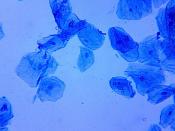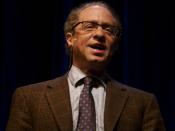Ray Kurzweil looks at the future in his new book " The Singularity is Near" as a culmination of three related fields of innovation. Genetics, nano-technology, and robotics. (Kurzweil, 205) The human genome is only about 800 million uncompressed bytes which really isn't all that much compared to the amount of data that a large mainframe program may run. To put it in perspective, the genetic information about the brain is 12 million bytes of compressed data, "smaller than Microsoft Word." The argument has never been that computers are smarter than humans, but that they can process instructions more efficiently. His thoughts are that if we can crack the instructional code for the human genome that we can possibly live forever. Perhaps this is a bit of an overstatement, but as Aubrey de Grey analogizes "how long does a house last?" implying that with upkeep it may exist indefinitely.
I think Kurzweil's time line is a bit optimistic. But when I say a bit optimistic, I mean by perhaps a decade or two, not centuries or millennia (Kurzweil addresses this all in depth in the book; we're actually seeing exponential growth across a massive number of fronts). I think Kurzweil is being optimistic on a personal level due to his own age--the man's in his fifties, and no doubt worries about the odds of personally surviving to see such the radical shift that he is prognosticating and anticipating.
What intrigues me most is the prospect for human enhancement. I consider this to be the most desirable, and perhaps even most inevitable, course towards the Singularity. We already have implants to allow deaf people to hear by tying directly into the auditory nerve (cochlear implants). We will follow that eventually with similar implants for vision, and eventually for other aspects...


